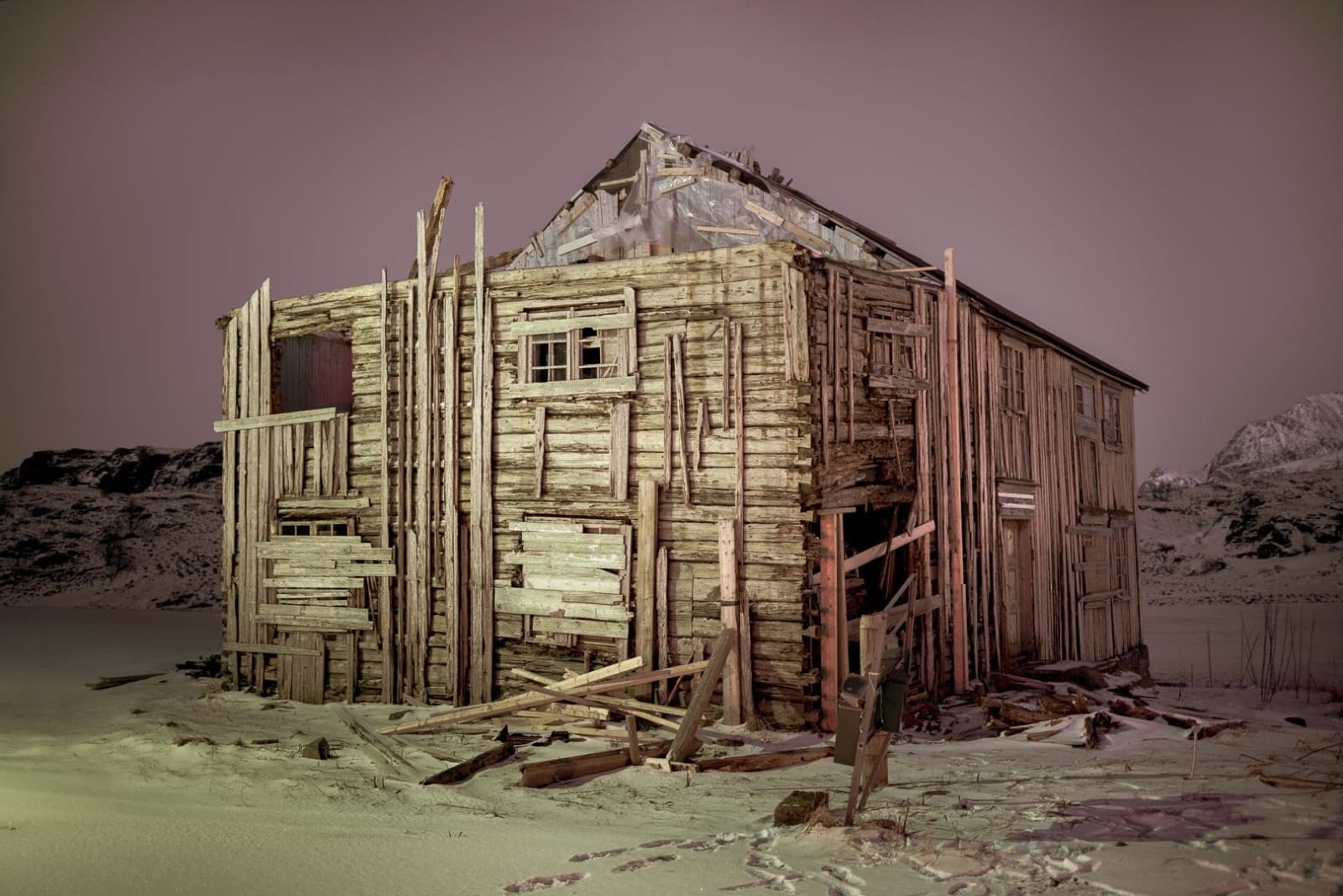
Todd Hido American, b. 1968
.
20 x 30 in / 50.8 x 76.2 cm
.
Edition of 5 + 1 AP
30 x 45 in / 76.2 x 114.3 cm
.
Edition of 3 + 2 AP
38 x 57 in / 96.5 x 144.8 cm
.
Edition of 1 + 1 AP NFS
59 1/2 x 88 1/2 in / 151.1 x 224.8 cm
.
Todd Hido’s photograph, 11927-6081, 2020, is an evocative portrait of solitude and memory. The image features a battered wooden house standing isolated in a snow-covered landscape, characterized by mismatched planks, sagging beams, and an aura of weathered endurance. Its structure, patched together as if time itself had tried to preserve it, exudes a haunting resilience. Windows stare blankly, the glass either gone or dulled, and scattered debris marks the ground with silent gestures toward former activity.
What Hido achieves here is more than documentation; it’s an emotional meditation steeped in ambiguity and longing. His cinematic approach, rooted in both personal memory and a fascination with atmospheric landscapes, invites the viewer to imagine the unseen narratives entwined with the house. The color palette amplifies this mood—a wash of dusty beige and faded pink—assigning the scene a kind of fragile tenderness rather than stark desolation. Light is sculpted precisely, lending depth to each board and casting elongated shadows that seem to pause time itself, allowing for reflection rather than mere observation.
Hido’s artistic philosophy is to “let the viewer fill in the blanks,” weaving drama from absence and atmospheres rather than overt action. The result is an image powerful in its quietness, full of space for the imagination to wander. The photograph doesn't simply record decay; it animates endurance and the persistence of memory. Each fragment—the house’s stubbornly upright walls, the snow's muted encroachment, the glow of distant light—is a note in a larger story, suggesting histories lived and lost.
This approach echoes Hido’s nuanced technique: photographing with a documentarian’s eye but printing like a painter, balancing fact and feeling in equal measure. The structure becomes a beacon, not just of survival, but of the fraught relationship between past and present—a locus for personal reverie, nostalgia, and the spectral beauty of forgotten places. Through the interplay of photographic realism and painterly suggestion, Hido transforms an abandoned home into a vessel for collective longing, a silent witness to the lives and weather that have shaped it. Every detail, from the rhythms of wood to the hush of the night sky, compels sustained attention and evokes a sense of shared memory.